While there is a lot of talk and speculation about the health benefits of massage, one thing is for certain: it feels darn good! There is however, research that shows massage has amazing health benefits. It’s a natural way to help relieve stress and pain in the comfort and convenience of home.
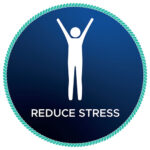
Massage can help to reduce stress on physical and psychological levels by lowering heart rate, blood pressure, cortisol levels, and insulin levels. Serotonin and dopamine are also released, which helps the body overcome chronic or habitual, as well as acute, or short-term stress.
One study by The University of Konstanz in Germany found that just 10 minutes of massage can activate the body’s system for overcoming stress.
Another well-known study by The University of Miami School of Medicine’s Touch Research Institute found that 15 minutes in a massage chair enhances measurable EEG brain activity in adults. Additionally, these adults performed more quickly and accurately in mathematical testing after receiving the massage, while groups without massage showed no improvements.
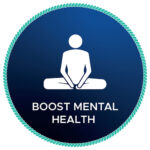
Dopamine, serotonin, and endorphins are neurotransmitters that are released when the autonomic nervous system is stimulated. Dopamine is known as the “feel-good” hormone. Serotonin helps regulate your mood as well as your sleep, appetite, digestion, and memory. And Endorphins are your body’s natural pain reliever, which your body produces in response to stress or discomfort.
Research shows that massage can help increase the secretion of endorphins, dopamine, and serotonin — the body’s “feel-good” chemicals, and help reduce the levels of stress hormones, such as cortisol, epinephrine, and norepinephrine to help reduce anxiety, fatigue, and stress.
In a study done on the “Treatment Effects of Massage Therapy in Depressed People: A Meta-Analysis”, they concluded that massage therapy is significantly associated with alleviated depressive symptoms.
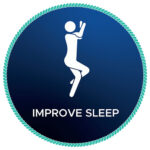
Many people use massage to help relax, manage stress and get better sleep. Regular massage sessions have been found to help decrease depression and anxiety levels and improve sleep quality. Massage can trigger the release of serotonin, a neurotransmitter that helps you feel calm. Massage can also help manage pain caused by stress or injury which may also contribute to lack of sleep such as headaches, neck and back pain and arthritis.
50 to 70 million Americans experience sleep issues that affect their health. According to the American Massage Therapy Association, studies show people who had regular massages reported a decrease in pain with fewer sleep disturbances
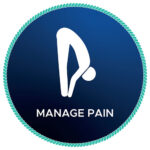
According to the American Chiropractic Association, lower back pain is the single leading cause of disability worldwide. Approximately one in ten people have it, and for many who develop back pain, it becomes a chronic condition. Massage helps improve venous and lymphatic flow throughout the body. By manipulating the muscles, blood flow is able to increase throughout the body. Increasing blood flow facilitates the circulation and absorption of nutritional elements into the muscle tissues.
Research has shown the inclusion of massage therapy can help with chronic pain such as back pain, headaches, osteoarthritis, and behavioral health issues like anxiety and depression, rehabilitation and athletic training and injury treatment.
Another study found that massage may provide lasting relief for chronic lower back pain, according to research published in the journal Pain Medicine. Researchers looked at 104 people with persistent back pain who were referred by their doctors to licensed massage therapists. They went to 10 sessions over 12 weeks, and the practitioners were free to design massage programs that were individual to the patients, rather than all using the same technique.
Most subjects completed a questionnaire, and more than 50% reported clinically meaningful improvement in their back pain. Several people even dropped below the threshold for disability according to lead author Niki Munk, an assistant professor of health sciences at Indiana University-Purdue University Indianapolis. Additionally, many of these improvements lasted. Three months later, with no further massage sessions, 75% of the people who reported initial improvement said they still felt better.
In a Harvard Medical School Publication, it was noted that therapeutic massage is now recognized as a legitimate therapy for some painful conditions, not just a luxury. It can possibly help to “close the pain gate” by stimulating competing nerve fibers and impeding pain messages to and from the brain.
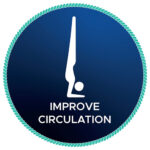
Massage therapy can help with circulation by increasing the blood flow. This helps increase oxygenation in the body and tissues. Blood carries oxygen, and oxygen helps us function properly and heal well. It can also help with lymphatic flow and removal of toxins in the body. Often when someone has poor circulation they have swelling, tension and tightness. The pressure applied through massage therapy can help move blood through congested areas and allow new blood to flow once those areas are released.
One study from the University of Illinois at Chicago showed that massage improved vascular function in people who had not exercised, suggesting that massage has benefits for people regardless of their level of physical activity.

Regular massage therapy can help increase the activity of the white blood cells that help the body fight disease. It helps increase the levels of lymphocytes, which are the cells that help the immunes system fight off harmful substances in the body. Stress can also be an immunosuppressor, and daily massage can help reduce your overall stress.
Research indicates that massage therapy can help strengthen the immune system. The study reported that people who had massage experienced measurable changes in their body’s immune and endocrine response. A Cedars-Sinai study found that participants in a Swedish massage group experienced significant changes in lymphocytes, which contribute a great deal to defending the body from disease. A lymphocyte is one of three subtypes of white blood cells in the immune system. “The research indicates that massage doesn’t only feel good, it also may be good for you,” says Rapaport, the principal investigator of the study.
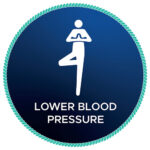
Massage has been shown to help lower blood pressure and heart rate. Lowering blood pressure helps reduce the risk of heart disease and stroke. Massage increases circulation, and when blood circulation is enhanced, blood pressure can be reduced and the heart rate begins to slow.
Several studies point to the benefits of massage therapy for heart benefits:
In a 2008 study, researchers studied 263 volunteers who underwent massage for 45 to 60 minutes. Average blood pressure fell by 10 mg Hg, and heart rate by 10 beats per minute—after just one treatment. “That’s about as much as you might get from prescribing a new blood pressure medication for life!” says cardiologist Dr. Joel Kahn.
In 2013 study, 50 people with mildly elevated blood pressure received a 15-minute massage three times a week for 10 sessions, while a similar group just relaxed for the same amount of time. By the end of the sessions, only blood pressure of the massage group participants had fallen, and remained lower for several days.
A study examined women with high blood pressure who had an hour long massage each week for four weeks. The drop-in markers of inflammation suggest massage therapy may have a body-wide healing effect.

Caring for muscles in between workouts can help accelerate recovery, help you avoid injury, plus improve your overall performance and health. By helping to reduce inflammation and increase blood flow, this can help ease the tightening and shortening of muscle tissue.
A study by the researchers at the University of Illinois at Chicago, studied if massage would improve systemic circulation and reduce muscle soreness after exercise. As expected, both groups felt sore immediately after exercise, but the exercise-and-massage group reported no continuing soreness 90 minutes after massage. “We believe that massage is really changing physiology in a positive way,” said Franklin. “This is not just blood flow speeds — this is actually a vascular response.”
And, according to the AMTA (American Massage Therapy Association), their research suggests massage has a substantial impact on both the physical and mental health of people who do sports and exercise. Massage can be a preventative, corrective, and rehabilitative treatment.
Massage isn’t just a luxury anymore, it’s a necessity. Owning your own massage chair is a convenient way to integrate daily massage into your life. It’s a natural pain reliever — whenever you need it, in the comfort of home. No appointment necessary!
Looking for a massage chair for sale? Look no further than InfinityMassageChairs.org. We offer a wide range of high-quality massage chairs at competitive prices. Our massage chairs are designed to provide exceptional comfort and therapeutic benefits, allowing you to experience the ultimate relaxation in the comfort of your own home. With our massage chairs, you can enjoy the convenience of a professional-quality massage anytime you desire. Explore our collection of massage chairs for sale and take the first step towards enhancing your well-being.
At InfinityMassageChairs.org, we are pleased to offer FREE DELIVERY on all orders. We want to ensure that you receive your massage chair without any additional shipping costs. Here’s all the information you need about payment options and our delivery process:
Payment Options:
To make your purchase convenient, We offer two secure payment options:
1. Bank Transfer: You can choose to make a payment via direct bank transfer. Simply select this option during the checkout process, and we will provide you with the necessary bank account details to complete the transfer. Please note that it may take some time for the payment to be processed and verified before we can proceed with the order.
2. Zelle: We also accept payments through Zelle, a popular digital payment platform. If you have a Zelle account, you can easily transfer funds to our designated email address. This payment method offers a fast and secure way to complete your purchase. Zelle is linked to most Banks and is instant, this will make the process faster.
Please note that all payments must be made in full before we can process your order.
Delivery Process:
We want to ensure that your massage chair is delivered to you in a timely and secure manner. Here’s an overview of our delivery process:
1. Order Processing: Once we receive your payment confirmation, our team will begin processing your order. This includes verifying the payment and preparing your massage chair for shipment.
2. Shipping: We work with reliable shipping partners to deliver your massage chair to your specified address. Rest assured that we cover all shipping costs, so you won’t have to worry about any additional fees.
3. Tracking: We will provide you with a tracking number once your massage chair is shipped. This way, you can monitor the progress of your delivery and have an estimated delivery date.
4. White Glove Delivery: For added convenience, we offer white glove delivery service upon request. Our professional delivery team will handle the entire process, from unpacking and assembly to placing the massage chair in your desired location. They can also provide a demonstration of the chair’s features and functionality.
We are committed to ensuring a smooth and satisfactory payment and delivery experience for all our customers. If you have any questions or concerns regarding payment or delivery, please feel free to reach out to our customer support team. We are here to assist you every step of the way.
At InfinityMassageChairs.org, we value the satisfaction of our customers and strive to provide the highest quality products. We have noticed some concerns regarding the condition of our massage chairs when purchased through third-party retailers, such as Costco. We want to assure you that purchasing directly from our website offers several advantages, ensuring a seamless and problem-free experience.
1. Product Integrity: When you purchase directly from our website, your massage chair is shipped directly from our warehouse. This means that the product goes through a thorough quality control process before being shipped to you. By eliminating the involvement of third-party retailers, we can ensure that your massage chair is in perfect working condition when it arrives.
2. Secure Packaging: We take great care in packaging and securing your massage chair for transportation. Our experienced team uses industry-standard packaging materials to protect the product during transit. This reduces the risk of any damage occurring during transportation, ensuring that your massage chair arrives in pristine condition.
3. Dedicated Customer Support: When you buy directly from us, you have direct access to our dedicated customer support team. They are available to assist you with any questions or concerns you may have, providing personalized assistance throughout the purchasing process and beyond.
4. Warranty Coverage: Purchasing directly from our website ensures that you receive the full benefits of our warranty coverage. In the unlikely event that any issues arise with your massage chair, our team will work diligently to resolve them and provide the necessary repairs or replacements as per the terms of our warranty.
We understand the importance of a smooth and hassle-free shopping experience, and we want to ensure that you receive the best product and service possible. By purchasing directly from our website, you can have confidence in the quality and condition of your massage chair. We invite you to explore our website and take advantage of the benefits that come with a direct purchase.
If you have any further questions or require assistance, please feel free to reach out to our customer support team. We are here to help and make your purchasing experience as enjoyable as possible.
© 2023 Infinity®. All rights reserved.